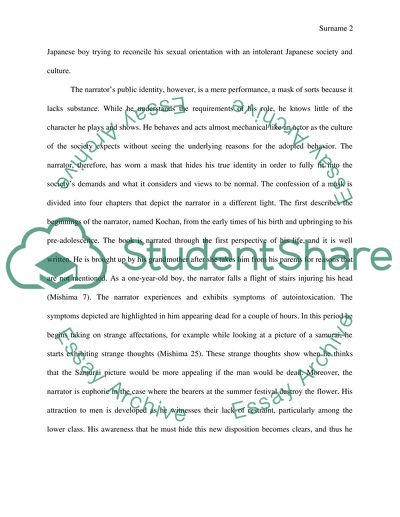Cite this document
(“Confessions of a Mask: Yukio Mishima Essay Example | Topics and Well Written Essays - 1250 words”, n.d.)
Confessions of a Mask: Yukio Mishima Essay Example | Topics and Well Written Essays - 1250 words. Retrieved from https://studentshare.org/literature/1689191-confessions-of-a-mask-yukio-mishima
Confessions of a Mask: Yukio Mishima Essay Example | Topics and Well Written Essays - 1250 words. Retrieved from https://studentshare.org/literature/1689191-confessions-of-a-mask-yukio-mishima
(Confessions of a Mask: Yukio Mishima Essay Example | Topics and Well Written Essays - 1250 Words)
Confessions of a Mask: Yukio Mishima Essay Example | Topics and Well Written Essays - 1250 Words. https://studentshare.org/literature/1689191-confessions-of-a-mask-yukio-mishima.
Confessions of a Mask: Yukio Mishima Essay Example | Topics and Well Written Essays - 1250 Words. https://studentshare.org/literature/1689191-confessions-of-a-mask-yukio-mishima.
“Confessions of a Mask: Yukio Mishima Essay Example | Topics and Well Written Essays - 1250 Words”, n.d. https://studentshare.org/literature/1689191-confessions-of-a-mask-yukio-mishima.


